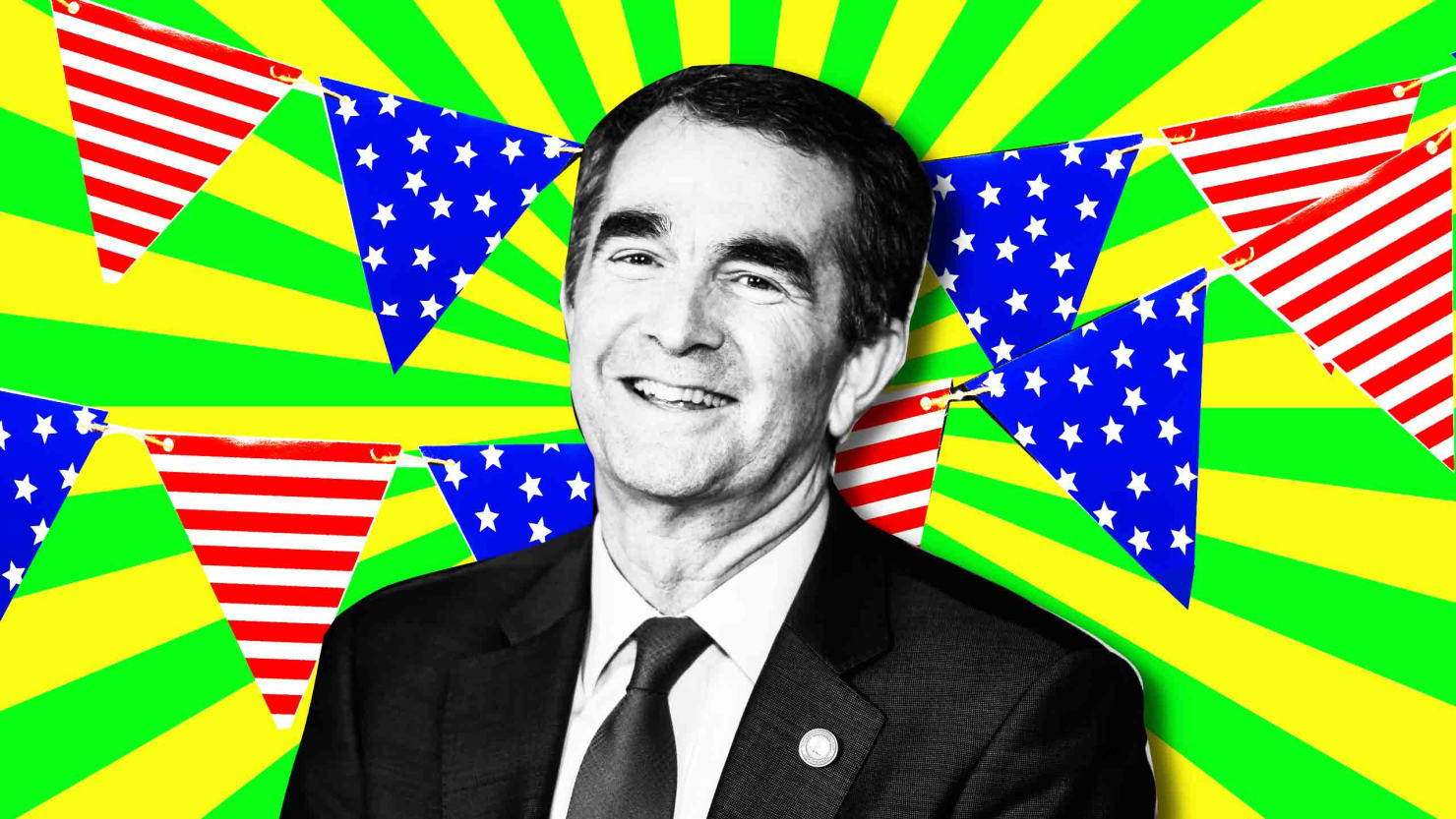Virginia’s recent statewide election resulted in a swell of Democrats flooding the Executive Mansion and Virginia House of Delegates. On Tuesday November 7, Ralph Northam won the gubernatorial race against Ed Gillespie. Fellow Democrats Justin Fairfax and incumbent Mark Herring won the Lieutenant Governor and Attorney General elections, respectively. Though despite suggestions otherwise, Virginia remains largely a purple state, meaning it has a vast mix of both Republican and Democratic constituents.
Looking at a color-coded map of the Virginia election results would lead many viewers to the assumption that Gillespie, not Northam, won the governor’s race, simply because of the number of red districts that appear. Indeed, the vast majority of the districts are some shade of red for each of the three major positions up for election. Nevertheless, the blue districts largely encompass a higher percentage of voters—Richmond, Virginia Beach and Northern Virginia make up a significant percentage of the population, and all three areas reported preference for Democratic candidates. In essence, the heavily populated regions acted as a microcosm of densely populated American cities, which are often the liberal centers of the nation. Virginia, in this case, embodies a sample of the U.S. as a whole.
The disparity between the ostensibly red map and blue outcomes is valuable for understanding the nation’s current political attitudes, though the attitudes might not be as clear-cut as they seem. Despite arguments that Virginia’s election represented a referendum on Trump, the state’s results show a mix of both expression of disapproval and an attempt to keep national politics out of state elections.
Great Expectations
Northam was slated to win the governor’s race by pundits, but not by the margin that he ended up securing. Instead of an expected 3 percent margin, Northam won by just under 8 percent. A five-percentage point difference is huge in politics, so Democrats were pleasantly surprised by the extent of Northam’s win. Both the Attorney General and the Lieutenant Governor elections held similar margins.
What shocked Virginians more than the Northam-Fairfax-Herring win was that Democrats swept at least fifteen new seats in the House of Delegates. Although as of November 13 an official count for the House has not been released, Democrats hold at least forty-nine seats while Republicans hold at least forty-eight. A recount is still in process for three seats. Even if Republicans win the majority of the House, however, Democrats are better represented than they have been for nearly two decades. Democrats have only held thirty-four seats since 2016, and thirty-two seats during the two previous election cycles; prior to the recent election, Democrats have not held the majority in the House of Delegates since 2000. The potential shift in House control would be monumental for Virginia Democrats, especially with a sweep of the three major leadership positions. Nevertheless, questions remain: What now? What do Virginia politics have to do with the rest of the country?
A Referendum on Trump?
Many people have compared the Virginia gubernatorial election to a referendum on Trump. The statewide election was seen as a test of support for the President, though exit polls tell a different story. In its exit poll coverage, the Washington Post presented voters with two questions: Did they consider Trump when voting, and did they approve of the President’s job thus far? The survey found that 47 percent of voters who took the exit poll did not consider Trump a factor in casting their vote—not a majority, but a plurality. Thirty-four percent, on the other hand, of polltakers viewed their vote as an expression of opposition to Trump, while 17 percent voted to show their support of Trump. In answer to the survey’s second question, the results found that 40 percent of voters approved of Trump’s job as President thus far, while 57 percent disapproved.
It should be noted that exit polls are not perfectly representative of all voters as not everyone participates in them; however, the sample is randomly selected, meaning the results should be largely representative. So, while pundits might be posturing the statistics to represent a tacit approval or disapproval—a referendum in a sense—of President Trump and his performance, this notion is negated by the 47 percent of voters who said they disregarded national politics when casting their vote.
The two questions, when examined side by side, provide an interesting contrast to each other. Despite a majority of voter disapproval, votes were cast without regard to Trump. A silver lining therefore emerges that the plurality of voters would have voted whether or not Trump was in office, which is encouraging considering voter turnout in the U.S. pales in comparison to most other representative democracies.
So despite many news sources referring to the recent election as a denunciation of Trump, it appears that most of Virginian voters did not factor Trump into their vote directly. But does the mere fact that Democrats inundated Virginia’s political seats illustrate a backlash toward an always partially Republican-run state government?
Virginia in the Middle
As a traditionally red state, Virginia’s recent shift into purple territory might seem like a shock; therefore, an entire Democratic sweep of Virginia is unprecedented at first glance. But it should be noted that a large population of Virginians are next-door neighbors to Washingtonians—inhabitants of one of the most liberal cities in the nation. Northern Virginia, along with areas like Richmond and Virginia Beach, accounts for a sizable proportion of the Virginia population, and its politics resemble those of other heavily populated urban areas as noted earlier. Furthermore, these populous areas are highly diverse—a feature that bodes ill for many hopeful Republican politicians like Gillespie. As it stands, the results in densely populated, urban areas were not unforeseen, but they pose the possibility that Virginians were resisting the overwhelming homogeneity that the federal government currently exemplifies.
Instead of a referendum on Trump, perhaps Virginia’s election resembles more of a referendum on white, rich, conservative politics that currently plague the nation’s capitol. Evidently, Trump fits into this description, but as the exit polls show, he is not the only problem. Current political discord lies much deeper than the President—and it always has. As the Virginia House of Delegates elections show, state governments and local governments matter; legislatures matter. The presidency is only a fraction of the problem, and the governorship only does so much. Virginians voted to ensure that each level of office in their state was filled with people who will—hopefully—start to enact change, which is why not only Northam but Democrats elected across the board cast such a stark shadow over the federal government at the moment. Virginia backlashed against the White House and Capitol Hill, not just Trump. Virginia took the first step in reclaiming and reforming a deeply outdated, hackneyed system.

















